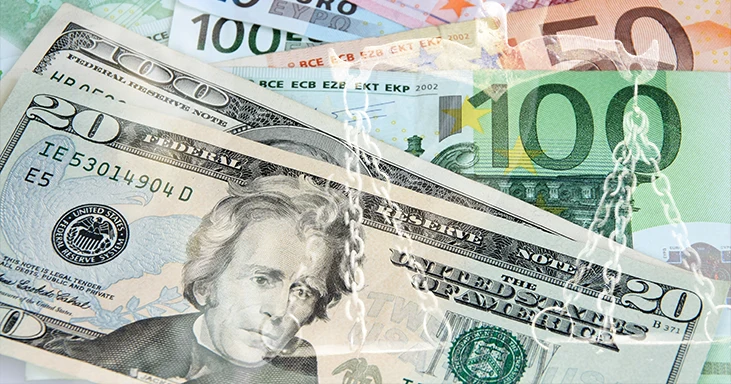


Deciphering Currency Pairs: What They Are and How They Work
Forex Fundamentals
Introduction to Currency Pairs
The currency pairs are the foundation of the Forex market, serving as a fascinating gateway for traders looking to explore the dynamic world of currency trading. Each currency pair consists of a base currency and a quote currency, providing a direct insight into the financial health of one nation compared to another. For example, when trading the popular EUR/USD pair, you assess the European Euro against the U.S. Dollar, determining how many dollars (the quote currency) it takes to buy one Euro (base currency).
This interaction reflects broader economic trends, from geopolitical events to market liquidity and volatility shifts. As you start your Forex trading journey, understanding these pairs is crucial for making informed decisions that could turn the market's complexities to your advantage.
Understanding Base and Quote Currencies
Diving into Forex trading starts with mastering the essentials of currency pairs, specifically understanding the roles of base and quote currencies. Imagine you're reading a Forex quote: the first currency listed is the base currency, which is always set to one unit. The second is the quote currency, which shows how much of this currency is needed to buy one unit of the base currency.
For instance, in the currency pair EUR/USD, the Euro (EUR) is the base currency, and the U.S. Dollar (USD) is the quote currency. If the current price is 1.13, 1 Euro can be exchanged for 1.13 U.S. Dollars. This setup isn't just numbers—it reflects the real-time economic dynamics between two economies. When you trade, you're essentially betting on the economic performance of these currencies against each other, influenced by factors like geopolitical stability, economic announcements, and market sentiment.
By understanding this, traders can analyze Forex markets more effectively, spotting trends in Forex rates and making strategic decisions based on fluctuations in these critical financial instruments. Engaging with base and quote currencies helps make informed trades and deepens your understanding of global economics.
Major Currency Pairs Explained
Understanding major currency pairs is akin to knowing the key players in a global economic theatre when entering the Forex arena. These pairs, featuring major currencies like the Euro, U.S. Dollar, British Pound, and Japanese Yen, reflect significant global trading activities and represent their respective nations' economic performance.
Take the EUR/USD pair, often nicknamed 'Fiber.' This is the most traded currency pair and a barometer for transatlantic economic health. When you trade EUR/USD, you're gauging the strength of the Euro against the resilience of the Dollar, impacted by factors ranging from EU economic policies to U.S. job reports. Similarly, the USD/JPY, known as the 'Ninja,' offers insights into the interplay between the American financial scene and the Japanese market.
These major pairs are known for their liquidity and tighter spreads, meaning they offer smaller price differences between what buyers are willing to pay and what sellers are willing to accept. This characteristic ensures that traders can execute large orders without significantly affecting the price, a real advantage in fast-paced trading environments.
By trading major currency pairs, investors engage directly with the fundamentals of the world's largest economies, navigating through Forex rates, market volatility, and economic updates that drive these currency values. This strategic approach is not just trading; it's a dynamic way to experience the global economy's ebb and flow.
Minor and Exotic Currency Pairs
While major currency pairs dominate the headlines and trading floors, another world in Forex is known as minor and exotic currency pairs. These pairs may capture a different volume than the majors, but they offer unique opportunities and challenges that can spice up any trading strategy.
Minor pairs, such as EUR/GBP or AUD/NZD, do not include the U.S. Dollar but involve major currencies. They can provide insights into regional economic relationships and are influenced by factors different from the majors. For example, EUR/GBP often reacts to changes in European and British economic policy.
Exotic currency pairs, like USD/SGD or EUR/TRY, pair a major currency with a currency from a smaller or emerging economy. These pairs are less liquid and tend to have wider spreads, meaning the cost to trade them can be higher. However, they can be highly volatile, offering significant profit potential for the savvy trader. For instance, movements in the USD/TRY can reflect geopolitical tensions in Turkey or significant changes in U.S. economic policies.
Trading these lesser-known pairs requires a good grasp of the economic fundamentals of the involved countries and a keen eye for technical analysis, as their price movements can be sharp and unpredictable. This dynamic corner of the Forex market is perfect for those looking to explore beyond the usual and potentially reap the rewards of volatility.
Factors Influencing Currency Pair Prices
Currency pairs, the heart of Forex trading, are influenced by a complex web of global events and economic indicators. Understanding these factors can significantly enhance your trading strategy and market insight.
Firstly, economic reports play a crucial role in shaping currency values. Data such as GDP growth, unemployment rates, and inflation figures can cause significant fluctuations in currency pairs. For instance, if the U.S. releases strong employment data, it might lead to an appreciation of the USD in pairs like USD/EUR or USD/JPY, reflecting increased confidence in the U.S. economy.
Interest rates set by central banks are another pivotal factor. When a country's central bank raises its interest rates, its currency typically strengthens due to the influx of investments in that country's assets, offering higher returns. On the other hand, decreasing interest rates can devalue a currency by reducing its appeal to investors.
Geopolitical stability also impacts currency strength. Political events such as elections, trade negotiations, or conflicts can induce volatility. For example, Brexit negotiations led to significant price movements in GBP/EUR as traders speculated on the outcomes and potential economic impacts.
Market sentiment, driven by traders' perceptions and reactions to the news, often leads to immediate but temporary market movements. This sentiment can be influenced by news headlines, economic forecasts, or global events, prompting traders to buy or sell currencies based on their predictions of future movements.
Lastly, natural disasters or pandemics can lead to sudden and unpredictable market shifts. These events can drastically alter a country's economic outlook, influencing its currency's strength in the global market.
By monitoring these factors, traders can anticipate potential price movements and manage their trades more effectively, harnessing the volatile yet rewarding nature of Forex trading.
Trading Currency Pairs
Trading currency pairs is more than guessing which currency will outperform another; it's about strategic analysis, understanding market dynamics, and timely decision-making. Whether you're a novice or an experienced trader, the basics of trading these pairs revolve around comprehending how different pairs react under various economic scenarios.
Let's break it down with a real-world analogy: imagine you're at a marketplace where traders eagerly exchange goods based on anticipated changes in supply and demand. In Forex trading, traders exchange currencies based on predictions about economic conditions and interest rate movements. For example, if the European Central Bank hints at boosting interest rates, the EUR/USD pair might see an uptick as investors flock to the Euro for better returns.
Effective currency trading also involves utilizing technical analysis. This method involves reading charts and applying statistical figures to predict future movements. Tools like moving averages, support and resistance levels, and Fibonacci retracement can guide traders in making more informed decisions.
Moreover, successful traders consistently apply risk management techniques. Setting stop-loss orders to limit potential losses and adjusting leverage wisely can protect against market volatility. For instance, if a trade goes against you, a stop-loss order ensures you exit at a predetermined point, minimizing financial damage.
In essence, trading currency pairs demands keen insight into global economic trends, proficiency in technical analysis, and strict risk management protocols. With these tools, traders can navigate the Forex market's complexities and enhance their potential for profitable outcomes.
Conclusion
Exploring the intricacies of currency pairs lays the groundwork for successful Forex trading. Traders can make more informed decisions by understanding the dynamics of base and quote currencies, major and minor pairs, and the myriad factors that influence their movements. Whether you're analyzing market trends, applying technical analysis, or managing risks, each step enhances your trading skills. Remember, the journey into Forex trading is continuous, and staying educated and adaptable is key to effectively navigating this ever-changing financial landscape.
FAQs on Currency Pairs
What are currency pairs in Forex trading?
Currency pairs in Forex trading represent the quotation and pricing structure of the traded currencies. Each currency pair consists of a base currency and a quote currency. The base currency is the first currency listed in the pair, while the quote currency is the second. The base currency is the unit of measurement, and the price shows how much of the quoted currency is required to buy one unit of the base currency. For example, in the pair EUR/USD, the EUR is the base currency, and USD is the quote currency. If the price is 1.20, one Euro can be exchanged for 1.20 US Dollars.
How do economic events affect currency pairs?
Economic events significantly impact currency pairs through changes in economic indicators, policy decisions by central banks, or geopolitical events. For instance, if a country's central bank raises interest rates, its currency is likely to appreciate due to the higher returns on investments denominated in that currency. Similarly, economic reports like GDP growth, employment rates, and inflation can cause fluctuations. Positive data can strengthen a currency, whereas negative data can weaken it. Traders monitor these events closely to predict potential market movements.
What strategies are best for trading major currency pairs?
Effective strategies for trading major currency pairs include technical analysis, fundamental analysis, and risk management. Technical analysis involves studying price charts to identify patterns and trends that predict future price movements. Fundamental analysis looks at economic indicators and events that affect the economic strength of the nations involved in the pair. Risk management is crucial, involving tools such as stop-loss orders to protect against potential losses. Traders often combine these strategies to enhance their chances of successful trading outcomes.



